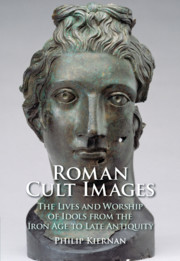Book contents
Six - The End of Idols
Published online by Cambridge University Press: 15 May 2020
Summary
When idols lost their sense of agency, they effectively died. While this could happen at any time, this chapter focuses on the end of idols in the late third century AD through to the early medieval period. It examines three main agents of cult image destruction: Germanic barbarians, Christian iconoclasts, and ‘rituals of closure’ conducted by pagans themselves. For the Germanic tribes who raided Roman territory for plunder starting in the third century AD, the destruction of cult images could intimidate prisoners intended to become slaves. Numerous Christian hagiographies describe the destruction of idols from the fourth to seventh centuries AD. At some sites, destructive attention was focused on specific images and parts of images, affirming a distinction between idols and other cult images. The careful burial of certain monuments, statues, and statue fragments suggest that some cult images were intentionally disposed of by those who venerated them. Similar rituals of closure in other world cultures prevent ritually charged material from being occupied by dangerous spirits, as well as being a fitting way of disposing of holy objects. In each instance, these actions only makes sense if idols are perceived of as possessing real power.
Keywords
- Type
- Chapter
- Information
- Roman Cult ImagesThe Lives and Worship of Idols from the Iron Age to Late Antiquity, pp. 222 - 271Publisher: Cambridge University PressPrint publication year: 2020



